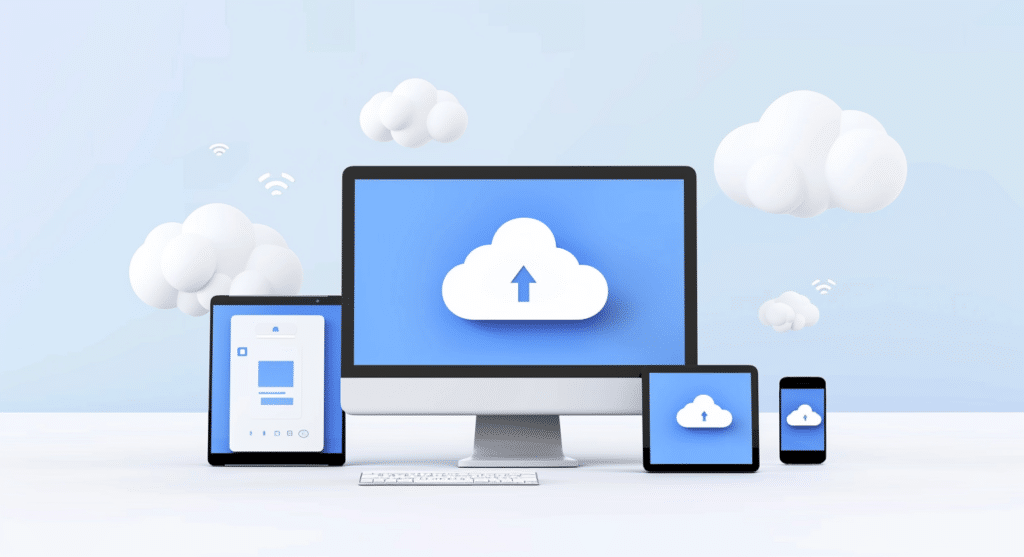Cloud computing has revolutionized the way businesses and individuals access and utilize technology. As we transition into a digital-first world, understanding cloud computing becomes essential. This article delves deep into the fundamentals, types, benefits, and tools of cloud computing, offering a comprehensive guide to this transformative technology.

Understanding Cloud Computing
Cloud computing is a term that describes the use of networked remote servers hosted on the internet to store, manage, and process data, rather than using a local server or a personal computer. It enables users to access computing resources like servers, storage, databases, networking, software, and more, all available over the internet.
Key Characteristics of Cloud Computing
- On-Demand Self-Service: Users can automatically provision resources as needed without requiring human interaction with the service provider.
- Broad Network Access: Services are available over the internet and can be accessed by a broad range of devices such as computers, smartphones, and tablet PCs.
- Resource Pooling: The provider’s resources are pooled to serve multiple clients using a multi-tenant model, with different physical and virtual resources dynamically assigned and reassigned according to consumer demand.
- Rapid Elasticity: Capabilities can be elastically provisioned and released to scale rapidly outward and inward with demand.
- Measured Service: Cloud systems automatically control and optimize resource use by leveraging metering capabilities at some level of abstraction suitable for the type of services (e.g., storage, processing).
Table 1: Key Features of Cloud Computing
| Feature | Description |
|---|---|
| On-Demand Service | Automatically provision resources as needed without human interaction |
| Broad Network Access | Access services over the internet on any device |
| Resource Pooling | Dynamically assign resources based on demand in a multi-tenant environment |
| Rapid Elasticity | Scale resources quickly and efficiently as needed |
| Measured Service | Optimize resource use with automatic control and metering |
Types of Cloud Computing Services
Cloud computing is not a one-size-fits-all technology. It encompasses various services designed to meet the diverse needs of users.
Infrastructure as a Service (IaaS)
IaaS provides basic computing infrastructures such as virtualized physical hardware that includes servers, networking technology, storage, and data center space. Examples include Amazon Web Services (AWS), Microsoft Azure, and Google Compute Engine.
Platform as a Service (PaaS)
PaaS offers hardware and software tools over the internet, typically supporting the web application development lifecycle. It simplifies the process of coding, testing, and deployment. Popular platforms include Google App Engine, Microsoft Azure, and Heroku.
Software as a Service (SaaS)
SaaS delivers software applications over the internet, on a subscription basis. It eliminates the need for organizations to install and run applications on individual computers. Examples include Google Workspace, Salesforce, and Microsoft 365.
Benefits of Cloud Computing
The adoption of cloud computing continues to grow due to its significant benefits:
- Cost Efficiency: Reduces the cost of managing and maintaining IT systems.
- Scalability: Offers flexibility as your needs change.
- Performance: Runs on a network of secure data centers which are regularly upgraded to efficient computing hardware.
- Reliability: Ensures data backup, disaster recovery, and business continuity easier and less expensive.

Tools and Technologies in Cloud Computing
Cloud computing environments support a variety of tools and technologies for developing, deploying, and managing applications. Here are some notable tools:
- Docker: A platform that enables developers to package applications into containers—standardized executable components combining application source code with the operating system (OS) libraries and dependencies required to run that code in any environment.
- Kubernetes: An open-source system for automating the deployment, scaling, and management of containerized applications.
- Ansible: An automation tool that provides automation for cloud provisioning, configuration management, application deployment, intra-service orchestration, and many other IT needs.
Conclusion
Cloud computing is an essential component of modern technology landscapes, offering scalable, efficient, and cost-effective solutions. As businesses and individuals increasingly rely on digital technology, understanding cloud computing is crucial for navigating the future.
By exploring the facets of cloud computing outlined in this article, readers can gain a clearer understanding of how to leverage cloud technologies to enhance their operations and drive innovation.
